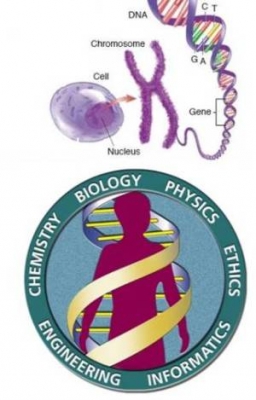
The Human Genome Project (HGP) was an international, collaborative research effort to determine the DNA sequence of the entire human genome (the complete genetic material present in the human organism). The project was launched in 1990 and was declared complete in 2003.
The HGP researchers deciphered the human genome in three major ways: determining the order or sequence of all the bases in our genome’s DNA; making maps that show the locations of genes for major sections of all our chromosomes; and producing what are called linkage maps, through which inherited traits (such as those for genetic disease) can be tracked over generations.
The HGP revealed that the human genome contained more than 2.85 billion nucleotides and that there are approximately 22,300 protein – coding genes in human beings.
The HGP has given the world a resource of detailed information about the structure, organization and function of the complete set of human genes.
As researchers learn more and more about the functions of genes and proteins, this knowledge is all set to have an even greater impact in the fields of medicine, biotechnology and life sciences.
Picture Credit : Google



